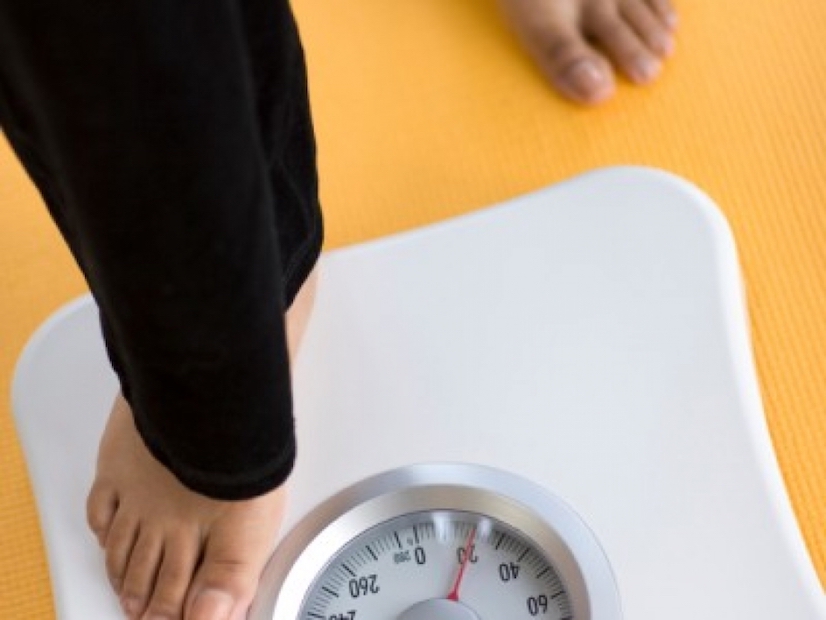Pregnancy was by far one of the best times of my life but also among the scariest. During this time, I was constantly bombarded with a boatload of conflicting information and advice on what I should and should not do, particularly when it came to lifting weights.
In fact, around my second trimester some women at the gym suggested I stop doing the overhead (shoulder) press since “holding my arms above my head during pregnancy could cause the umbilical cord to wrap around my baby’s neck.”
Nevertheless, while many delusions behind pregnancy-related dos and don’ts are based on superstitions, beliefs and old wives’ tales like this, some are more concrete, having a bit of truth surrounding them.
Like the time I was told that heavy lifting in early pregnancy could trigger a miscarriage, which initially struck a major blow at my self-confidence. But, as a scientist, I’ve remained the skeptic, especially given the utter stigma attached to women and weight training in general.
Related Article: 8 Reasons Why Women Should Weight Train
Without a doubt, the health and safety of my unborn baby was always first and foremost my primary concern while pregnant. Still, I’m one of those women who chose to remain very active and physically fit during pregnancy as opposed to living as if being pregnant was some sort of disability.
Needless to say, engaging in heavy lifting would get me a lot of snide looks from other women, especially when my workouts were more intense than theirs. But, trusting my own wisdom, intuition and gut instincts, I decided to stick with my weight lifting routine to the best of my physical ability and, ultimately, succeeded in doing so for at least 35 out of the 40 weeks I was pregnant.
As an exercise scientist with an extensive health and fitness background, I’d be remiss if I didn’t share my personal insights along with some of the real truths about weight training in pregnancy.
Interestingly, and unbeknownst to many women, moderate-to-high intensity exercise has actually been proven safe and highly effective in the prevention of excessive weight gain and common prenatal disorders like gestational diabetes and preeclampsia.
In addition, exercising over the entire course of pregnancy has beneficial affects on infant development and growth while also aiding in the prevention of numerous chronic diseases (heart disease, type 2 diabetes, and obesity) through childhood and adulthood.
When it comes to exercising during pregnancy, weight training comes with its own unique set of benefits.
Weight training inherently preserves muscle and supports the maintenance of adequate levels of strength and endurance. This is especially beneficial, as many women tend to experience muscle wasting and weakness in pregnancy and postpartum.
Muscle naturally fuels the fat burning process that’s necessary for sustaining a healthy body weight over the course of pregnancy. This makes it that much easier for women to lose the baby weight afterwards.
In addition, the maintenance of muscular strength and endurance with weight training promotes good posture, balance and stability, aids in the alleviation of pregnancy-related aches and pains, and has also been shown to ease the labor and delivery process.
Related Article: 5 Reasons Why Resistance Training Is Necessary for Weight Loss
So, what are the best weight lifting exercises to perform during pregnancy?
Well, interestingly enough, the best types of exercise to perform in pregnancy are exactly the same as those that would be performed in the non-pregnant state. The level of exercise intensity, however, may vary from person to person and throughout the course of pregnancy.
Now, let me emphasize here that muscle maintenance should be the number one goal of your weight training routine in pregnancy. This is not the time to train for physique enhancements or dramatic gains in muscle size.
Personally, my weight training regimen was highly intense throughout the first and second trimesters but more moderate towards the end of my pregnancy. While I regularly performed full body workouts, I put a lot of emphasis on my back and lower body muscle groups with exercises like squats, lunges, deadlifts, planks, and rows.
Such muscles are prone to pain and weakness during pregnancy and are especially critical during the labor and delivery process.
Related Article: Causes of Low Back Pain: Can Exercise Help?
Although most recommendations suggest that intense weight lifting should be avoided in the early phases of pregnancy, I essentially maxed out during all my workouts up to the 10th week, mainly due to the fact that I was unaware of my pregnancy. But, every woman is different. If your workouts were intense prior to pregnancy, chances are you can continue the same routine.
It’s just important to listen to your body and be cognizant of physical cues. If you don’t feel up to it, don’t do it!
For maximal effectiveness and safety during pregnancy, newbies should perform one or multiple sets of 12-20 (or more) repetitions of a variety of exercises that target the major upper and lower body muscle groups (chest, back, shoulders, biceps, triceps, and legs).
By lifting this way, you’ll improve your muscle endurance while preserving muscle, which is critical for weight loss after pregnancy.
When choosing your resistance, go for weights that fatigue your muscles within your desired number of repetitions. For example, if you plan to perform 20 repetitions, your muscles should start to fatigue somewhere between 18 and 20. In other words, 18 should feel like you can’t make it to 20 but light enough for you to get there. Use this as a guideline when selecting your resistance.
There are many types of resistance that you can use to train this way but some of the most common types include dumbbells, kettlebells, machines, rubber tubing, and body weight. With any of this equipment you can perform a range of exercises for all your muscle groups.
Although most weight training exercises are generally safe, you should refrain from performing any that require lying on your back at the 16-20 week mark, as doing so can reduce blood flow to the uterus and fetus.
Now, whether you’re a new or experienced weight lifter, it’s important to concentrate on your breathing whenever you train. Holding your breath during lifts (Valsalva maneuverer) can increase abdominal pressure in a way that severely restricts uterine and fetal blood flow.
To maintain efficient breathing, always start by inhaling deeply through your nose and then exhaling through your mouth whenever you’re performing a lift.
So, hopefully I’ve provided some valuable insights about the importance of lifting weights during pregnancy and addressed any potential concerns you might have.
In addition to its beneficial effects on muscle maintenance, endurance and strength, I can definitely say that this type of training greatly enhanced my energy levels, mental toughness, and physical stamina during labor and delivery.
Of course my level of discomfort was beyond high but I approached the process like an intense workout and ultimately gave birth to a healthy 9 pound 6 ounce baby boy in the absence of an epidural.





